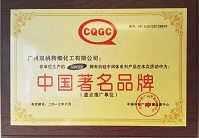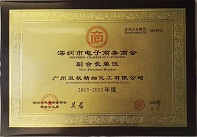
![]() E-mail: admin@gz-chemical.com
E-mail: admin@gz-chemical.com
Email us,best price and silane solutions for you!
Tel:+86 (20) 29035969

![]() E-mail: admin@gz-chemical.com
E-mail: admin@gz-chemical.com
Email us,best price and silane solutions for you!
Tel:+86 (20) 29035969


An international team led by researchers from the University of Geneva (UNIGE), Switzerla
nd, has designed a family of molecules capable of binding to metal ions present in the
surrounding environment and providing an easily detectable light signal during binding. Th
is new type of sensor forms a 3-D structure whose molecules are chiral, that is to say,
structurally identical but not superimposable, like the left and right hands. These molecules
consist of a ring and two luminescent arms that emit a particular type of light in a process
called Circular Polarized Luminescence (CPL), and selectively detect ions such as sodium.
This research has been published in Chemical Science.
"The luminescent arms of our molecules function like light bulbs that light up or turn off
depending on the presence of a positively charged ion, a metal cation," explains Jérôme
Lacour, Dean of the Faculty of Science at UNIGE and Ordinary Professor in the Department
of Organic Chemistry. These molecules can be compared to small locks. When they are
ready to operate and detect the presence of metals, they emit a particular type of light
(circularly polarized). When a metal ion is inserted, it acts on them like a key, the lock
geometry changes and the light disappears.
These "locks" are made up of two parts: a ring (a crown ether) that can encircle metal ions
such as sodium, and two twisted arms that extend from the rim and act like light bulbs, allo
wing researchers to detect whether metal ions are present or not. In the absence of metal
ions, the two arms are close together and emit intense polarized luminescence. When a metal
ion is inserted, the molecule changes geometry. The arms move apart and stop emitting light.
Guangzhou Double Peach Fine Chemical Co.,Ltd
Address: No 3401 Huangpu East Road, Huangpu District, Guangzhou, China
Tel:+86 (20) 29035969 Fax:+86(20)29035979
Tel/Wechat/Whatsapp:0086 13826126978 admin@gz-chemical.com